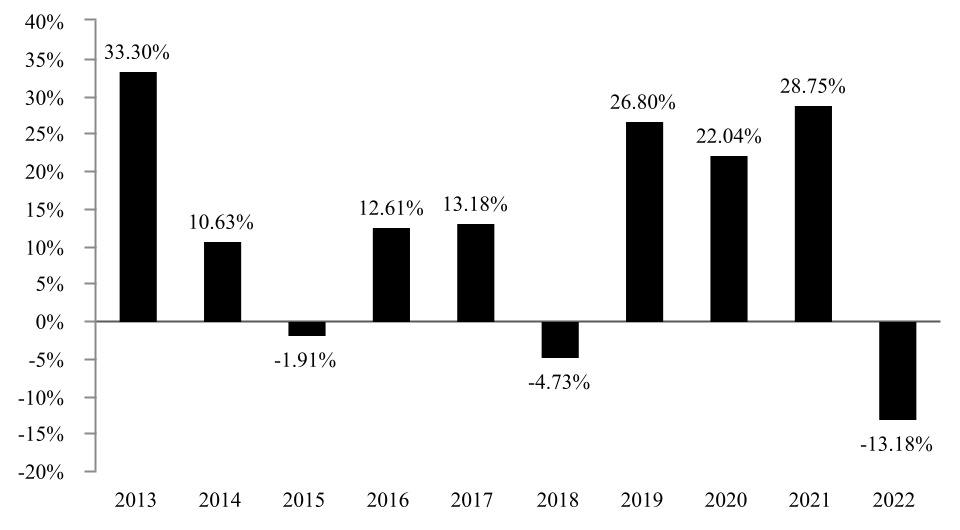Losing all or a portion of your investment is a risk of investing in the Fund. The following principal risks could affect the value of your investment: •General Market Risk. Economies and financial markets throughout the world are becoming increasingly interconnected, which increases the likelihood that events or conditions in one country or region will adversely impact markets or issuers in other countries or regions. Securities in the Fund’s portfolio may underperform in comparison to securities in general financial markets, a particular financial market or other asset classes due to a number of factors, including: inflation (or expectations for inflation); interest rates; global demand for particular products or resources; natural disasters or events; pandemic diseases; terrorism; regulatory events; and government controls. U.S. and international markets have experienced significant periods of volatility in recent years and months due to a number of economic, political and global macro factors, which has resulted in disruptions to business operations and supply chains, stress on the global healthcare system, growth concerns in the U.S. and overseas, staffing shortages and the inability to meet consumer demand, and widespread concern and uncertainty. Continuing uncertainties regarding interest rates, rising inflation, political events, rising government debt in the U.S. and trade tensions also contribute to market volatility. As a result of continuing political tensions and armed conflicts, including the war between Ukraine and Russia, the U.S. and the European Union imposed sanctions on certain Russian individuals and companies, including certain financial institutions, and have limited certain exports and imports to and from Russia. The war has contributed to recent market volatility and may continue to do so. •Equity Securities Risk. The price of equity securities may rise or fall because of economic or political changes or changes in a company’s financial condition, sometimes rapidly or unpredictably. These price movements may result from factors affecting individual companies, sectors or industries selected for the Fund’s portfolio or the securities market as a whole, such as changes in economic or political conditions. •Management Risk. Your investment in the Fund varies with the success and failure of the Advisor’s investment strategies and the Advisor’s research, analysis and determination of portfolio securities. •Small and Medium Companies Risk. Investing in securities of small and medium capitalization companies may involve greater volatility than investing in larger and more established companies because small and medium capitalization companies can be subject to more abrupt or erratic share price changes than larger, more established companies. •Real Estate Investment Trust (REIT) Risk. Investments in REITs will be subject to the risks associated with the direct ownership of real estate. Risks commonly associated with the direct ownership of real estate include fluctuations in the value of underlying properties, defaults by borrowers or tenants, changes in interest rates and risks related to general or local economic conditions. REITs have their own expenses, and the Fund will bear a proportionate share of those expenses. In addition, the value of an individual REIT’s securities can decline if the REIT fails to continue qualifying for special tax treatment. •Foreign and Emerging Market Securities Risk. Foreign securities may be more volatile and less liquid than domestic (U.S.) securities, which could affect the Fund’s investments. Securities markets of other countries are generally smaller than U.S. securities markets. These risks are enhanced in emerging markets. •ETF and Mutual Fund Risk. When the Fund invests in a mutual fund or ETF, it will bear additional expenses based on its pro rata share of the mutual fund’s or ETF’s operating expenses, including the potential duplication of management fees. The risk of owning a mutual fund or ETF generally reflects the risks of owning the underlying securities the mutual fund or ETF holds. The Fund also will incur brokerage costs when it purchases ETFs. The Fund may be appropriate for investors who: •Have a long-term investment horizon; •Want to add an investment with potential for capital appreciation to diversify their investment portfolio; and •Can accept the greater risks of investing in a portfolio with equity holdings.
| 